Understanding Laptop Memory Banks: Key Insights
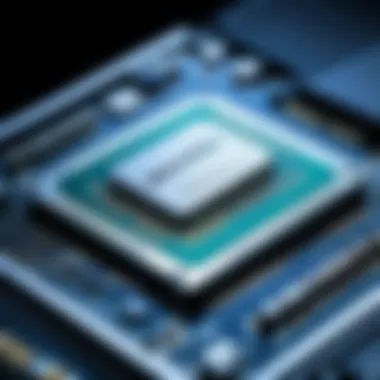
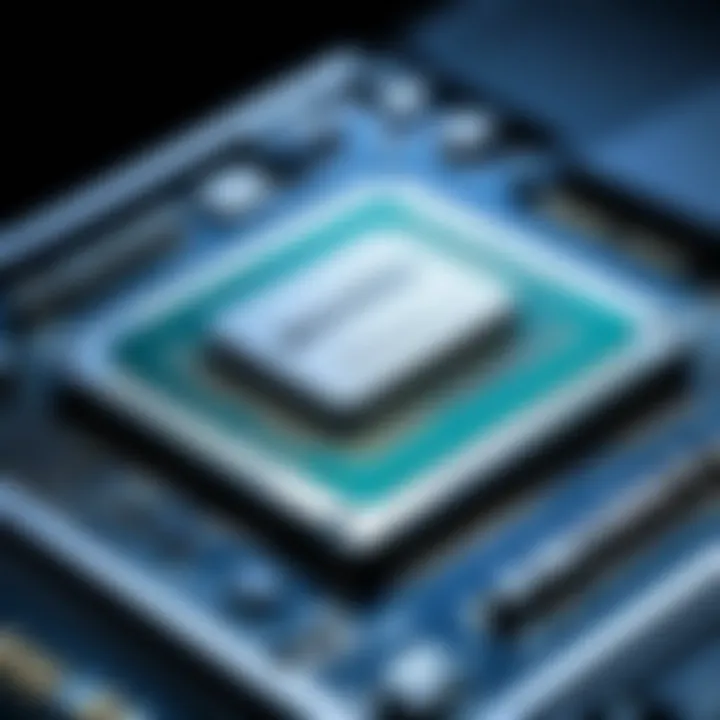
Intro
In today’s fast-paced technological world, laptops are a central piece of daily life, whether for professionals crunching numbers, students typing away on an assignment, or gamers diving into their favorite virtual adventures. A crucial component of a laptop’s performance is its memory bank – the unsung hero that quietly works in the background. Understanding the types and functions of laptop memory can lead to significant performance enhancements and a smoother user experience.
Yet, navigating through the labyrinth of memory options can be daunting for many. With terms like DDR4, SDRAM, and RAM being tossed around like confetti, what do they actually mean to the average user? In this article, we aim to untangle these concepts and provide a roadmap for choosing the right memory bank for your needs.
This guide will primarily focus on exploring features followed closely by practical performance analysis, ensuring a holistic view of laptop memory. It’s not just about numbers or specifications, but how these elements impact real-world usage. Armed with this knowledge, users will be empowered to make informed decisions about memory upgrades, enhancing their laptops’ capabilities significantly.
Let’s delve into the details, starting with a look at the key features of memory banks in laptops.
Features Overview
Key Specifications
The specifications of memory banks can make or break your laptop's performance. The most notable metrics include:
- Type of Memory: Common types include DDR4 and DDR5, with new advancements continuing to emerge.
- Speed: Measured in megahertz (MHz), speed affects how quickly data is processed. The higher the speed, the better the performance.
- Capacity: This indicates how much data can be stored. Typical options range from 4GB to a staggering 64GB or more.
- Latency: Represented as CL (CAS latency), lower numbers can translate to faster response times.
Understanding these specifications is paramount for optimizing performance. For example, someone who predominantly engages in tasks such as video editing may benefit from memory with higher capacity and speed.
Unique Selling Points
Memory banks aren’t just about specifications; certain features tantalize tech enthusiasts. Here’s what to look for:
- Energy Efficiency: Newer generations often come with better power consumption. This is especially important for laptops, as unnecessary drain leads to shorter battery life.
- Heat Management: Advanced memory technologies have built-in mechanisms to dissipate heat, which can otherwise compromise performance.
- Compatibility: Many laptop users overlook this point. Not all memory is interchangeable, and selecting modules that seamlessly integrate with existing systems is crucial.
Taking note of these unique aspects can not only enhance performance but also extend the lifespan of a laptop.
Performance Analysis
Benchmarking Results
Performance benchmarking offers a tangible way to evaluate the effectiveness of memory banks. For instance, tests such as PassMark and PCMark are commonly utilized to measure various performance metrics across different memory models and configurations. Results often reveal:
- Speed Tests: These measure read, write, and access times to highlight the speed of different memory modules.
- Multi-tasking Efficiency: Evaluating how well laptops manage multiple applications concurrently can be telling of overall memory performance.
Real-world Scenarios
What do these numbers translate to in daily use? Consider a graphic designer using Adobe Creative Suite. They typically require significant memory capacity and favorable speeds to handle large files, rendering, and multitasking between applications. A laptop with insufficient memory may display lag, crashes, or excessive loading times, leading to frustration.
In another scenario, a casual user browsing the web or streaming content may find that 8GB of RAM suffices. However, as more tabs open or background processes run, performance can dwindle. Thus, understanding one’s specific needs is essential when considering memory upgrades.
Having a solid grasp on the features, capabilities, and empirical evidence regarding performance allows users to tailor their laptop experience. Now that we've covered the fundamentals, let's continue our exploration into memory architectures, common issues, and the innovations shaping this critical aspect of computing.
Understanding Laptop Memory
Understanding laptop memory is akin to holding the keys to the kingdom of your device's performance. Memory plays an instrumental role in how a laptop processes information, runs programs, and ultimately delivers a seamless user experience. In this comprehensive guide, we aim to shed light on the types of memory, their functionalities, and how they contribute to the overall performance of a laptop. Whether for IT professionals looking for a technical edge or tech enthusiasts wanting a deeper understanding, it’s essential to grasp the fundamental aspects of laptop memory.
Defining Memory in Computing
When delving into the world of computing, memory refers to the components that store data temporarily for active processes. Think of computer memory as the workspace on a kitchen counter. Just like a larger counter allows for more items to be prepared simultaneously, a laptop with sufficient memory can handle multiple tasks without breaking a sweat.
Memory in a computer is divided into two principal categories: volatile and non-volatile. Volatile memory requires power to maintain the stored information, while non-volatile memory retains it even when the device is turned off. Random Access Memory (RAM) is the most common form of volatile memory, utilized during active processes. In contrast, hard drives and solid-state drives (SSD) exemplify non-volatile memory, storing data for long-term access.
Understanding these distinctions is key. It illuminates why laptops speed up with increase in memory, which also helps in multitasking and handling more complex tasks seamlessly. For professionals who regularly work with demanding applications, a solid grasp of memory types and their attributes becomes crucial.
Role of Memory in Laptop Performance
Think of memory in a laptop as the lifeblood coursing through a complex machine. It directly affects the speed of processing and the overall efficiency while working on tasks. When you load an application or open files, your laptop pulls data from memory to allow you to interact with that software or document promptly. The faster and more adequate your memory is, the smoother your experience will be.
Here are some points to consider regarding the role of memory in laptop performance:
- Speed: High-capacity, faster memory means quicker data retrieval, enhancing the user's efficiency.
- Multitasking Ability: Sufficient memory allows users to run multiple applications without significant slowdowns.
- Data Handling: More memory can accommodate larger datasets, crucial for applications in data analysis or graphics design.
In essence, if memory is likened to a library, a well-stocked library makes finding information easier and faster. Thus, understanding the intricacies of memory helps users make informed decisions about upgrades and repairs, ensuring they get the most out of their devices.
"The right memory can turn a good laptop into a great one; it’s all about knowing what you need."
In this article, as we progress to explore different types of laptop memory and their specific applications, we ensure that you understand not just how memory works but also how to leverage it for optimal performance.


Types of Laptop Memory
Understanding the different types of laptop memory is vital for any IT professional or tech enthusiast. The effectiveness and efficiency of laptops largely depend on memory configurations. Memory is not merely a storage solution; it directly influences performance, responsiveness, and efficiency in multitasking and handling complex applications. Selecting the right memory type can significantly alter user experience and performance benchmarks. So, let's dig a bit deeper into the various types of laptop memory that are available.
Dynamic Random Access Memory (DRAM)
Dynamic Random Access Memory, commonly known as DRAM, is the most prevalent form of memory found in computers and laptops today. It’s characterized by its dynamic nature, requiring constant refreshing to maintain stored data. This memory type plays a crucial role in processing data efficiently, making it a favored choice among manufacturers.
Benefits of DRAM
One significant benefit of DRAM is its high density. It can store a large volume of data in a relatively small physical space, making it suitable for modern laptops that require compact design without compromising on performance. Additionally, DRAM is cost-effective, which makes it a favorite amongst budget-conscious consumers who still seek good performance in their machines. Its ability to handle multiple tasks simultaneously is essential for operating systems and applications that operate in a multitasking environment.
- High data density.
- Cost-effective for large capacities.
- Efficient handling of multitasking situations.
However, while DRAM excels in many areas, its need for regular refreshing to maintain data adds a layer of complexity in its operation.
Limitations of DRAM
Despite its benefits, DRAM comes with some limitations. Its volatile nature means that all stored information is lost once power is off. This has implications for users who often work with sensitive information and expect it to persist through power failures. Additionally, because DRAM must refresh data constantly, it can lead to increased power consumption about other types of memory, which is a concern, especially in battery-operated devices like laptops.
- Volatility leads to data loss on power failure.
- Increased power consumption due to refreshing needs.
Static Random Access Memory (SRAM)
Static Random Access Memory, or SRAM, is another type of memory, albeit less common in the laptop realm compared to DRAM. It retains data bits in its memory as long as power is supplied, making it faster and more reliable for specific tasks.
Advantages of SRAM
The main advantages of SRAM are its speed and stability. Because it doesn't need to be refreshed like DRAM, it offers quicker access times, which significantly enhances the performance of devices using it. It's particularly beneficial in scenarios requiring low latency, such as in cache memory or high-speed applications. This can be especially relevant for users dealing with high-performance tasks like gaming or graphic design.
- Fast access time improves performance.
- More stable under power loss situations.
Nevertheless, this speed comes at a cost – both in terms of higher price and lower density relative to DRAM.
Disadvantages of SRAM
The primary disadvantage of SRAM is cost. Manufacturing SRAM is generally more expensive due to its complex architecture, making it less ideal for applications needing large amounts of memory. Furthermore, its lower data density means fewer bits can fit into the same area compared to DRAM, which can further drive up expenses for those looking to build budget machines.
- Higher manufacturing cost compared to DRAM.
- Lower density limits capacity options.
Synchronous Dynamic RAM (SDRAM)
Synchronous Dynamic RAM, known as SDRAM, brings synchronization to the world of dynamic memory. This memory type operates in sync with the CPU clock, ensuring data is processed more efficiently than conventional forms of DRAM.
Understanding SDRAM
Understanding the design behind SDRAM is crucial because it allows for higher performance by reducing the number of cycles needed to read or write data. This alignment with the CPU clock enables SDRAM to process multiple data requests simultaneously. The unique nature of SDRAM secures its place in modern computing architecture due to its effectiveness in fast-paced environments.
- Sync with CPU clock enhances data handling.
- Suitable for high-performance applications.
However, SDRAM still shares some limitations typical of DRAM, including volatility.
Use Cases for SDRAM
SDRAM is widely utilized in applications demanding fast and reliable access speeds, such as video games or advanced graphics processing. Its ability to handle several operations at once without lag makes it beneficial for multitasking operations, particularly in laptops that need a solid mix of power and efficiency. In contexts where rapid data transfer is essential, SDRAM frequently shines.
- Ideal for gaming and graphics processing.
- Efficient handling of multitasking environments.
Double Data Rate Synchronous Dynamic RAM (DDR SDRAM)
Double Data Rate Synchronous Dynamic RAM, or DDR SDRAM, enhances the functionalities of regular SDRAM by transferring data twice per clock cycle. This advancement has allowed for a significant boost in performance over its predecessors and stands as the backbone of modern laptop memory configurations.
Evolution of DDR Types
The evolution of DDR memory is a tale of continuous improvement. From DDR to DDR4 and now DDR5, each generation has brought enhancements in speed, power efficiency, and bandwidth. As laptop demands increase, so too does the memory industry's response to these needs, providing faster and more efficient options that match technological advancements in CPUs and GPUs alike.
- DDR memory increases speed and efficiency.
- Multiple generations cater to growing demands.
Different types of DDR memory align well with various user needs, making the right choice pertinent for optimal performance.

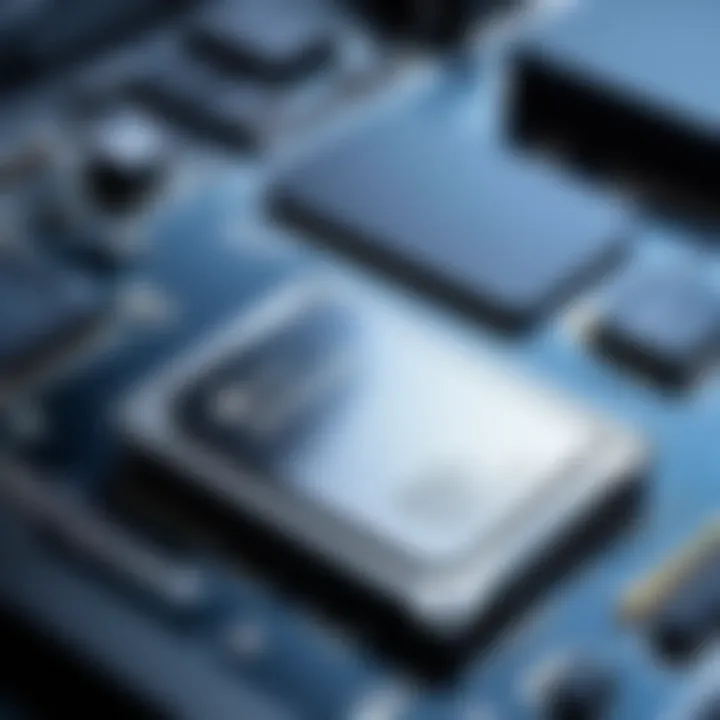
Current DDR Standards
As of this writing, the most recognized DDR standards are DDR4 and DDR5. DDR4 has become the standard for many laptops due to its blend of price and performance, while DDR5 is emerging as the next leap, prioritizing higher data bandwidth to accommodate newer applications and gaming environments.
- DDR4 strives for balance between performance and cost.
- DDR5 focuses on achieving cutting-edge performance levels.
Both types maintain the capability of taking full advantage of the faster processing cores in modern laptops, underscoring the importance of selecting compatible memory for specific needs.
Current trends indicate a shift towards DDR5 in future laptop designs, emphasizing the necessity for users to stay informed about upcoming memory standards to make educated upgrading decisions.
Memory Architecture in Laptops
Understanding memory architecture in laptops isn't just about knowing the different types of memory; it’s about recognizing how these various components interact and impact the device's performance as a whole. Memory architecture refers to the way memory is organized and accessed within the laptop, which is crucial for optimizing speed and efficiency.
An effective memory architecture enhances data flow, ensuring that the CPU can retrieve and process data swiftly, thus reducing latency. This is especially pertinent for tasks requiring quick access and manipulation of large datasets, such as gaming, video editing, or extensive multi-tasking.
Moreover, a well-planned memory architecture can also lead to better energy efficiency. As laptops become increasingly essential in both professional and personal settings, energy consumption becomes a vital consideration. So, an efficient architecture not only supports better performance but also contributes to longer battery life.
Memory Channels
Memory channels are the pathways that connect the memory modules to the memory controller. The number of channels directly affects how much data can be transferred at a given time. A single-channel configuration means the data is sent one bit at a time, whereas multi-channel configurations enable simultaneous data transfer, significantly enhancing performance.
Here’s a quick overview of types of memory channels you might encounter:
- Single Channel: Sends data sequentially; this can bottleneck performance.
- Dual Channel: Allows two bits of data to be transferred simultaneously; a major step up in speed compared to single.
- Quad Channel: Further increases the throughput by enabling four bits to be transferred at once. This is more common in high-performance laptops and workstations.
It’s important to choose the right configuration based on your needs. For instance, if you’re a casual user who mostly browses the web and uses basic applications, single-channel is often sufficient. However, for intense gaming or data-heavy tasks, dual or quad-channel becomes more beneficial, significantly enhancing throughput.
Multi-Channel Configuration
Multi-channel configurations are pivotal in maximizing a laptop's memory performance. By implementing multiple channels, laptop designers can leverage the available bandwidth more effectively, which translates into quicker data access and improved responsiveness.
In practical terms, if you have two memory sticks of the same type and capacity installed in a dual-channel configuration, the data transfer rate can nearly double compared to a single stick of the same RAM size. This effectively reduces bottlenecks and enhances overall system stability.
When considering a multi-channel setup, it's essential to match the memory modules to ensure compatibility. Mismatched speeds or sizes can lead to complications like reduced performance or system instability. Here are some key considerations:
- Identical Specs: Using RAM sticks of the same brand, speed, and size maximizes compatibility.
- Motherboard Support: Check that your laptop’s motherboard supports multi-channel configurations. Some older models might not take full advantage of the dual and quad-channel capabilities.
- Testing for Performance: It’s a good idea to benchmark your setup; using diagnostic tools can provide insight into whether you’re truly benefiting from a multi-channel setup.
Selecting the Right Memory Type
Choosing the appropriate memory type for your laptop isn't just about numbers and specs. It's a vital decision that sets the tone for the entire user experience. The right memory can enhance responsiveness, boost multitasking, and ultimately prolong the lifespan of your device. Think of it as the backbone of your laptop's performance—get it right, and you’re golden; get it wrong, and you might find yourself wrestling with sluggish processing and constant system lag.
Assessing Needs and Usage
Before diving deep into specifications, it’s crucial to assess the specific requirements based on your usage patterns. Different users have vastly different needs; a gamer, for example, demands more from memory in terms of speed and capacity than someone who primarily browses the web or works on spreadsheets.
- Gaming Needs: Modern games can eat up memory like a hungry bear at a picnic, making it necessary to consider high-speed DDR SDRAM with ample capacity.
- Professional Software: If you’re using software for graphic design or video editing, look for options that support high data transfer rates.
- Everyday Tasks: On the flip side, a simple use case like browsing or document editing might only require a basic configuration.
Understanding your usage offers a roadmap to select suitable memory, ensuring you don’t overspend or fall short of your needs.
Compatibility with Existing Hardware
Not all laptop memory is created equal, and this is where compatibility becomes paramount. Installing a memory type that doesn’t fit with your current hardware speicifications is akin to trying to put a square peg in a round hole. To avoid this:
- Check Specs: Look at your laptop's motherboard specs to identify supported memory types (like DDR3 or DDR4).
- Physical Size: Consider the form factor as well—SO-DIMM is common for laptops, but there may be variances in size even within this category.
- Maximum Capacity: Each laptop has a maximum memory capacity. Finding and understanding this limit can save you from investing in memory that's simply not usable.
Ensuring compatibility will spare you the headache of returns, malfunctions, and wasted costs.
Budget Considerations
Last but certainly not least, budgetary constraints play a significant role in the process of selecting memory. It can be tempting to go all out, but weighing your options carefully can lead to a balanced decision.
- Price Range: Memory prices can vary wildly depending on speed and capacity. Keeping an eye on sales or opting for reputable brands without breaking the bank might prove wise.
- Long-term Value: While it’s easy to be swayed by lower prices, investing a little more on up-to-date technology can pay dividends in performance and longevity.
- Used and Refurbished Options: Sometimes, a good deal on a refurbished piece can meet your needs just as well as a brand-new part.
Ultimately, having a clear budget in mind will guide all other decisions in your memory selection process, ensuring you get good value without overspending.
"Choosing the right memory isn't just a decision; it's an investment in your laptop's future."
By taking the time to assess your needs, ensuring compatibility, and carefully considering your budget, you empower yourself to make a well-informed choice that aligns with your personal or professional requirements.
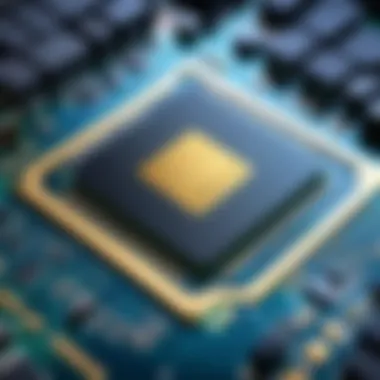
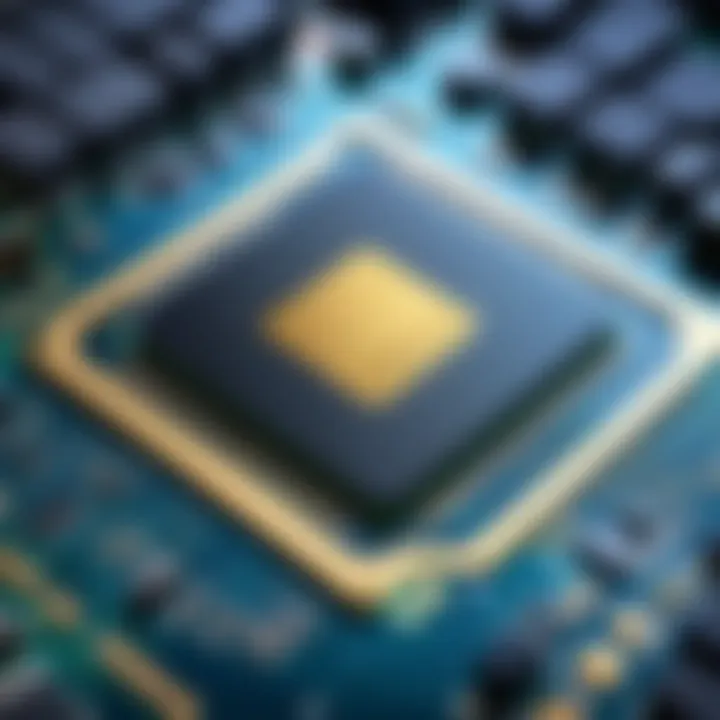
Upgrading Laptop Memory
Upgrading laptop memory is a crucial aspect of enhancing a device's performance, making it a focal point in our exploration of memory banks. When users face lagging applications or sluggish response times, the thought of upgrading memory often crosses their minds. It's not merely about adding more space to store files; it's about improving the overall functionality of the device, especially for those who run demanding software or multitask regularly. In a tech landscape where efficiency is paramount, understanding the ins and outs of memory upgrades can have a significant impact on productivity.
Benefits of Memory Upgrades
Upgrading memory can lead to tangible improvements in how a laptop operates. Here are some key advantages to consider:
- Increased Speed: One of the most immediate benefits is a noticeable increase in speed. More RAM allows the system to handle multiple tasks simultaneously without stuttering or crashing.
- Enhanced Multitasking: With more memory, laptops can run more applications at once. For instance, a designer running Photoshop and browsing multiple tabs on a web browser will find their workflow significantly smoother.
- Future-Proofing: Upgrading memory helps extend the life of a laptop. This is particularly important in an era where software requirements continue to grow with each major update.
- Better Gaming Performance: Gamers especially notice improved frame rates and less lag when they boost their memory. For those who enjoy playing the latest titles, having enough RAM can be a game changer.
"An upgrade in memory is like giving your laptop a much-needed breath of fresh air, allowing it to perform to its fullest potential."
Steps to Upgrade Memory
If you decide to embark on the journey of upgrading your laptop’s memory, it’s essential to follow a systematic approach to ensure a smooth process. Here’s how to do it:
- Check Compatibility: Before making any purchases, you need to check what type of memory your laptop supports. Look for information on maximum capacity and DDR versions. Online resources like Wikipedia or Reddit forums can be helpful.
- Purchase Suitable RAM: Once you know what type of RAM you need, buy it from a reliable source. Ensure that the specifications match your laptop model to avoid any compatibility issues.
- Prepare Your Workspace: Turn off and unplug your laptop, then remove the battery if possible. Having a clean, static-free workspace is essential to prevent any damage to the hardware.
- Install the New Memory: Open the memory compartment (often located on the bottom of the laptop). Remove the old memory sticks, if needed, and replace them with the new ones, ensuring they are firmly seated in the slots.
- Boot Up and Test: Once the installation is complete, reassemble the laptop and boot it up. Check your system configuration to confirm that the new memory is recognized correctly. Run some applications to test the performance boost.
- Monitor Performance: After upgrading, keep an eye on how your laptop behaves under different workloads. This will help confirm whether the upgrade met your expectations.
Whether you're looking to enhance system performance for work or play, upgrading laptop memory can provide the lift you need. As more processes run in the background and applications evolve, the significance of memory upgrades cannot be overstated.
Common Memory Issues
Understanding common memory issues is critical for both IT professionals and tech enthusiasts, as these problems can significantly hinder a laptop’s performance. Memory, being fundamental to how a computer operates, can be a source of frustration when errors occur or when performance bottlenecks emerge. Knowing how to diagnose and address these issues can ensure smooth operation and extend the lifespan of a device.
Memory Errors and Diagnostics
Memory errors can manifest in various ways—from random crashes to the infamous blue screen of death. When these errors arise, it's essential to conduct a thorough diagnostic assessment. Here are some common memory errors one might encounter:
- Corruption of memory data: This occurs when data stored in memory becomes unreliable. Symptoms may include unexpected behavior in software.
- Physical memory faults: Stick or chips may fail, which can lead to system instability.
To diagnose these issues, tools like Windows Memory Diagnostic or memtest86 can be utilized. An effective process involves:
- Running these diagnostics, which perform comprehensive tests of the memory.
- Recording errors reported by the software and testing for specific memory addresses.
- Identifying faulty RAM modules and replacing them if necessary.
"Even if it seems like a minor hiccup, addressing memory errors promptly can save you heartache down the line."
Performance Bottlenecks Related to Memory
When performance dips occur, it’s often traced back to memory-related bottlenecks. Understanding these can help in troubleshooting. Some common causes of performance bottlenecks associated with memory include:
- Insufficient memory capacity: When more applications are loaded than what's supported by the existing memory, systems may resort to slower disk-based memory swapping.
- High Latency: This is the time it takes for your system to retrieve data. High latency can cause delays in application performance, often leading users to believe their system is sluggish.
- Incompatible memory modules: Mixing different types of memory can lead to complications. Performance drops can happen if the system is unable to utilize memory optimally.
To mitigate these issues:
- Consider upgrading memory capacity based on usage patterns.
- Regularly check RAM health and compatibility using relevant diagnostic tools.
- Optimize system settings to reduce memory contention.
Memory issues can take various forms, and being aware of how to properly diagnose and address them is essential for maintaining laptop performance.
Future Trends in Laptop Memory Technology
As technology continues to evolve at a breakneck pace, memory solutions for laptops are also undergoing a significant transformation. Anticipating future trends in laptop memory technology is vital for understanding how these enhancements will improve performance, efficiency, and usability. The importance lies not just in knowing what's coming next but also in grasping how these innovations can directly impact the experience of end users, particularly professionals who depend on reliable and responsive machines for their daily tasks.
Emerging Memory Technologies
3D NAND and its Implications
3D NAND technology represents a substantial step forward in memory architecture. Unlike traditional flat NAND flash which arranges memory cells in a single layer, 3D NAND stacks cells vertically in multiple layers. This key characteristic allows for greater storage density while maintaining speed and reliability. The benefits are substantial:
- Increased Storage Capacity: With the ability to stack multiple layers, devices can hold more data in a smaller physical footprint.
- Efficiency: 3D NAND often consumes less power compared to its 2D counterparts, making laptops run cooler and extend battery life.
One of the unique features of 3D NAND is its durability. By distributing stress across many layers, it offers a longer lifespan. However, it can come with higher production costs, which may influence pricing for laptops using this technology.
"Transitioning to 3D NAND enhances performance while offering a cost-effective way to meet rising storage demands in laptops."
MRAM and its Advantages
Magnetoresistive Random Access Memory (MRAM) is another emerging standout, gaining traction due to its potential to provide a bridge between speed and data retention. The key characteristic of MRAM lies in its use of magnetic states to store data, rather than electric charge, which offers significant advantages:
- Speed: MRAM provides faster read/write times, comparable to SRAM, which boosts overall laptop performance.
- Data Integrity: Unlike traditional RAMs that require constant power to retain data, MRAM maintains information even when powered off, adding reliability for users.
A unique feature of MRAM is its ability to handle write-intensive tasks without degradation in performance, making it suitable for heavy computational needs. Nevertheless, the technology is still in its early stages and might face challenges regarding scalability and cost.
Impact on Laptop Performance and Functionality
As new memory technologies emerge, the impact on laptop performance is profound. Higher storage densities coupled with speed enhancements allow machines to handle more demanding applications without lag, effectively reshaping the interaction experience for users. For IT professionals and tech enthusiasts alike, these advancements mean better multitasking capabilities, shorter load times, and a smoother overall functionality.
In summary, keeping an eye on future trends in laptop memory technology not only informs consumers about what to expect but also empowers them to make choices that align with their professional needs.



